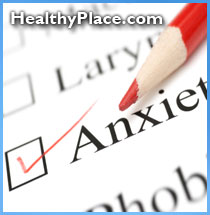Learn about the benefits, side-effects and disadvantages of tricyclic antidepressants (Tofranil, Pamelor, Norpramin) for treatment of anxiety and panic attacks.
A. Tricyclic Antidepressants (TCAs)
Physicians use tricyclic antidepressants in the treatment of severe depression or depression that occurs with anxiety. Several also have broad anti-obsessional and anti-panic effects.
 Possible Benefits. Often effective in reducing panic attacks and elevating depressed mood. Well researched. Usually a single daily dose. Some generics available, which reduces cost. Tolerance does not develop. Non-addicting.. Often effective in reducing panic attacks and elevating depressed mood. Well researched. Usually a single daily dose. Some generics available, which reduces cost. Tolerance does not develop. Non-addicting.
Possible Benefits. Often effective in reducing panic attacks and elevating depressed mood. Well researched. Usually a single daily dose. Some generics available, which reduces cost. Tolerance does not develop. Non-addicting.. Often effective in reducing panic attacks and elevating depressed mood. Well researched. Usually a single daily dose. Some generics available, which reduces cost. Tolerance does not develop. Non-addicting.
Possible Disadvantages. Delayed onset (take from 4-12 weeks). Anticholinergic effects. Postural hypotension. Possible side effects initially (including insomnia, tremor, or both) may last up to the first two to three weeks of treatment. Weight gain can be as much as one pound per month with about 25% of patients gaining 20 pounds or more. Dangerous in overdose. Should not be used by patients with narrow-angle glaucoma or certain heart abnormalities. Men with an enlarged prostate should avoid certain antidepressants. Delayed onset (take from 4-12 weeks). Anticholinergic effects. Postural hypotension. Possible side effects initially (including insomnia, tremor, or both) may last up to the first two to three weeks of treatment. Weight gain can be as much as one pound per month with about 25% of patients gaining 20 pounds or more. Dangerous in overdose. Should not be used by patients with narrow-angle glaucoma or certain heart abnormalities. Men with an enlarged prostate should avoid certain antidepressants.
Possible Side Effects. The anticholinergic effects of dry mouth, blurred vision, constipation, and difficulty in urination; postural hypotension; tachycardia, loss of sex drive; erectile failure; increased sensitivity to the sun; weight gain; sedation (sleepiness); increased sweating. Some of these side effects will disappear with the passage of time or with a decrease in the dosage. Some people may experience side effects on dosages as low as 10 mg per day: jitteriness, irritation, unusual energy, and difficulty falling or staying asleep.. The anticholinergic effects of dry mouth, blurred vision, constipation, and difficulty in urination; postural hypotension; tachycardia, loss of sex drive; erectile failure; increased sensitivity to the sun; weight gain; sedation (sleepiness); increased sweating. Some of these side effects will disappear with the passage of time or with a decrease in the dosage. Some people may experience side effects on dosages as low as 10 mg per day: jitteriness, irritation, unusual energy, and difficulty falling or staying asleep.
Dosages Recommended by Investigators. One-third of panic-prone individuals become jittery and actually experience more anxiety symptoms for the first two to three weeks. For this reason, the medication trial should probably be initiated with a very low dose -- as little as 10 to 25 milligrams (mg) per day of imipramine, for example. If uncomfortable side effects appear, one approach is to wait two to three weeks for them to diminish before increasing to the next higher dose. If the patient adjusts to the side effects, the physician increases the dosage every two or more days until the patient is taking the preferred dosage. . One-third of panic-prone individuals become jittery and actually experience more anxiety symptoms for the first two to three weeks. For this reason, the medication trial should probably be initiated with a very low dose -- as little as 10 to 25 milligrams (mg) per day of imipramine, for example. If uncomfortable side effects appear, one approach is to wait two to three weeks for them to diminish before increasing to the next higher dose. If the patient adjusts to the side effects, the physician increases the dosage every two or more days until the patient is taking the preferred dosage.
If daytime sedation or other side effects are bothersome to the patient, the physician may suggest taking the full dosage at night before bed.
Tapering. Your doctor may suggest that you begin to taper your TCA six months to a year after you have controlled your panic attacks. You can taper it gradually over a two- to three-week period as a way to avoid the flu-like symptoms that commonly occur if you abruptly stop the medication, however even more gradual tapering can help monitor for a relapse in panic attacks. If you stop this medication abruptly, withdrawal symptoms may begin in twenty-four hours, including nausea, tremor, headache, and insomnia. Few symptoms should be evident with a gradual decrease in dose. Panic attacks will not usually return immediately after you stop the medication, but may recur several weeks later. Your doctor may suggest that you begin to taper your TCA six months to a year after you have controlled your panic attacks. You can taper it gradually over a two- to three-week period as a way to avoid the flu-like symptoms that commonly occur if you abruptly stop the medication, however even more gradual tapering can help monitor for a relapse in panic attacks. If you stop this medication abruptly, withdrawal symptoms may begin in twenty-four hours, including nausea, tremor, headache, and insomnia. Few symptoms should be evident with a gradual decrease in dose. Panic attacks will not usually return immediately after you stop the medication, but may recur several weeks later.
Of this family, imipramine has been the focus of most of the panic treatment research.
Imipramine (Tofranil and others)
Possible Benefits. Blocks panic attacks in 70% of people. Non-addicting. Tolerance doesn't develop. Helps depression. Continued improvement for several months. Because it is slowly metabolized by the body, you can take it once daily, usually at bedtime. . Blocks panic attacks in 70% of people. Non-addicting. Tolerance doesn't develop. Helps depression. Continued improvement for several months. Because it is slowly metabolized by the body, you can take it once daily, usually at bedtime.
Possible Disadvantages. Not very helpful for anticipatory anxiety. Response takes weeks or months. One quarter to one half of imipramine patients relapse after tapering from the drug. Not recommended while breast-feeding and used only with physician consent while pregnant. . Not very helpful for anticipatory anxiety. Response takes weeks or months. One quarter to one half of imipramine patients relapse after tapering from the drug. Not recommended while breast-feeding and used only with physician consent while pregnant.
Possible Side Effects. Initial use of imipramine occasionally causes an increase in anxiety that usually diminishes in several weeks. Anticholinergic effects are stronger than most other antidepressants. If they are bothersome to you, it may be possible to switch to a different TCA with less anticholinergic effects. Dizziness from a lowering of blood pressure is moderate. If postural hypotension troubles you, nortriptyline may work more effectively. Imipramine causes some jitteriness in about 20 to 25% of subjects, which usually lasts one to three weeks, but can be often avoided by starting with as little as 10 mg before bed. The tendency toward weight gain is moderate. Some patients, especially males, experience reduced sex drive or responsiveness while taking this drug. Other side effects are palpitations (changes in heart beat), sweating and drowsiness. One third of patients are unable to tolerate side-effects and must switch to another medication. Initial use of imipramine occasionally causes an increase in anxiety that usually diminishes in several weeks. Anticholinergic effects are stronger than most other antidepressants. If they are bothersome to you, it may be possible to switch to a different TCA with less anticholinergic effects. Dizziness from a lowering of blood pressure is moderate. If postural hypotension troubles you, nortriptyline may work more effectively. Imipramine causes some jitteriness in about 20 to 25% of subjects, which usually lasts one to three weeks, but can be often avoided by starting with as little as 10 mg before bed. The tendency toward weight gain is moderate. Some patients, especially males, experience reduced sex drive or responsiveness while taking this drug. Other side effects are palpitations (changes in heart beat), sweating and drowsiness. One third of patients are unable to tolerate side-effects and must switch to another medication.
Dosages Recommended by Investigators. Once daily dosing. The best way to reduce the early anxiety symptoms with the start of imipramine is to begin with a very small dose, typically 10 mg at bed time, and increase the dose 10 mg every day until you reach the dose of 50 mg per day. It can block panic in some patients with 50 mg per day, so maintaining this dose level for several days is a good strategy. If the dose is not effective, then the physician can increase it 25 mg every third day up to 100 mg. After one week, if panic continues, then the dose can increase by 50 mg every third day. Although some patients require a smaller or larger dosage, the usual maintenance dosage is between 150 mg and 250 mg per day. . Once daily dosing. The best way to reduce the early anxiety symptoms with the start of imipramine is to begin with a very small dose, typically 10 mg at bed time, and increase the dose 10 mg every day until you reach the dose of 50 mg per day. It can block panic in some patients with 50 mg per day, so maintaining this dose level for several days is a good strategy. If the dose is not effective, then the physician can increase it 25 mg every third day up to 100 mg. After one week, if panic continues, then the dose can increase by 50 mg every third day. Although some patients require a smaller or larger dosage, the usual maintenance dosage is between 150 mg and 250 mg per day.
Desipramine (Norpramin, Pertofrane and others)
Possible Benefits. Helpful for depression as well as panic. Continued improvement for several months. Tolerance does not develop. Non-addicting. Causes little or no drowsiness. Helpful for depression as well as panic. Continued improvement for several months. Tolerance does not develop. Non-addicting. Causes little or no drowsiness.
Possible Disadvantages. Not much help for anticipatory anxiety. Response requires weeks or months. Use in pregnancy or breast-feeding only with physician's approval. Avoid alcohol completely. Increases sensitivity to sun.. Not much help for anticipatory anxiety. Response requires weeks or months. Use in pregnancy or breast-feeding only with physician's approval. Avoid alcohol completely. Increases sensitivity to sun.
Possible Side Effects. Postural hypotension, memory impairment, jitteriness, tremor, insomnia (especially on initiation) and the anticholinergic effects of dry mouth, blurred vision, constipation, urinary retention. Insomnia and the tendency for weight gain are mild. Sedation is rare. Postural hypotension, memory impairment, jitteriness, tremor, insomnia (especially on initiation) and the anticholinergic effects of dry mouth, blurred vision, constipation, urinary retention. Insomnia and the tendency for weight gain are mild. Sedation is rare.
Dosages Recommended by Investigators. Once daily, 25-300 mg per day. Taper gradually.. Once daily, 25-300 mg per day. Taper gradually.
Nortriptyline (Pamelor, Aventyl)
Possible Benefits. Helps depression as well as panic. Continued improvement for several months. Helps depression as well as panic. Continued improvement for several months.
Possible Disadvantages. Not much help for anticipatory anxiety. Response requires weeks or months. Often requires several blood tests over the first weeks to establish the proper level of the medication. Avoid use during first three months of pregnancy. Increases sensitivity to the sun.. Not much help for anticipatory anxiety. Response requires weeks or months. Often requires several blood tests over the first weeks to establish the proper level of the medication. Avoid use during first three months of pregnancy. Increases sensitivity to the sun.
Possible Side Effects. Less jitteriness than imipramine; less postural hypotension than other tricyclic antidepressants; lightheadedness, mild sedation (sleepiness), weight gain, insomnia, impaired urination and anticholinergic effects (20% experience dry mouth).. Less jitteriness than imipramine; less postural hypotension than other tricyclic antidepressants; lightheadedness, mild sedation (sleepiness), weight gain, insomnia, impaired urination and anticholinergic effects (20% experience dry mouth).
Dosages Recommended by Investigators. Once a day, starting at 10 to 25 mg. Therapeutic dose is typically between 50 and 75 mg per day, with some individuals requiring up to 150 mg, based on blood level. Taper slowly. . Once a day, starting at 10 to 25 mg. Therapeutic dose is typically between 50 and 75 mg per day, with some individuals requiring up to 150 mg, based on blood level. Taper slowly.
Clomipramine (Anafranil)
Possible Benefits. Helps control obsessive-compulsive disorder by reducing the duration and intensity of these symptoms and the corresponding anxiety. May help as much as imipramine for panic attacks. Relieves depression. Helps control obsessive-compulsive disorder by reducing the duration and intensity of these symptoms and the corresponding anxiety. May help as much as imipramine for panic attacks. Relieves depression.
Possible Disadvantages. Strong side effects. Takes about four to six weeks to work. Patients with certain abnormal electrocardiograms, with narrow-angle glaucoma, or with an enlarged prostate should not take this medication. Avoid during last three months of pregnancy to prevent withdrawal symptoms in infant. Can be expensive.. Strong side effects. Takes about four to six weeks to work. Patients with certain abnormal electrocardiograms, with narrow-angle glaucoma, or with an enlarged prostate should not take this medication. Avoid during last three months of pregnancy to prevent withdrawal symptoms in infant. Can be expensive.
Possible Side Effects. Like imipramine, you may experience more general anxiety the first few days up to three weeks. The most common side effects are headaches, drowsiness, dry mouth, constipation and insomnia. Other common side effects are blurred vision, urinary retention, fatigue, weight gain, postural hypotension, nervousness, muscle twitching, decreased ability to have orgasm (42% of men), increased sweating, and sedation (sleepiness). Increases sensitivity to the sun. Elderly patients may experience confusion and memory impairment.. Like imipramine, you may experience more general anxiety the first few days up to three weeks. The most common side effects are headaches, drowsiness, dry mouth, constipation and insomnia. Other common side effects are blurred vision, urinary retention, fatigue, weight gain, postural hypotension, nervousness, muscle twitching, decreased ability to have orgasm (42% of men), increased sweating, and sedation (sleepiness). Increases sensitivity to the sun. Elderly patients may experience confusion and memory impairment.
Dosages Recommended by Investigators. Ranging from 150 to 300 mg per day. Usually start at 25 mg for a few days. Increase by 25 mg every three to four days to 100 mg per day, usually taken in one dose. Raise the dose over the next few weeks to a maximum of 300 mg. Taking the dose at night can sometimes reduce the side effects. It takes four to six weeks to notice significant therapeutic benefits from clomipramine. Ranging from 150 to 300 mg per day. Usually start at 25 mg for a few days. Increase by 25 mg every three to four days to 100 mg per day, usually taken in one dose. Raise the dose over the next few weeks to a maximum of 300 mg. Taking the dose at night can sometimes reduce the side effects. It takes four to six weeks to notice significant therapeutic benefits from clomipramine . The full range of benefits may take twelve weeks. Taper slowly, over three to four weeks or longer.
Amitriptyline (Elavil)
Possible Benefits. Helpful for panic attacks and depression. Causes less potential for insomnia. Is sometimes used when patients are having trouble sleeping, because of its sedating effects.. Helpful for panic attacks and depression. Causes less potential for insomnia. Is sometimes used when patients are having trouble sleeping, because of its sedating effects.
Possible Disadvantages. Not much help for anticipatory anxiety. Response requires weeks or months. The sedating side effects can limit productivity and concentration during the day. Avoid during first three months of pregnancy and consult physician before using last six months and before breast-feeding. Increases sensitivity to sun.. Not much help for anticipatory anxiety. Response requires weeks or months. The sedating side effects can limit productivity and concentration during the day. Avoid during first three months of pregnancy and consult physician before using last six months and before breast-feeding. Increases sensitivity to sun.
Possible Side Effects. Strong anticholinergic effects and moderate levels of drowsiness, weight gain and dizziness. . Strong anticholinergic effects and moderate levels of drowsiness, weight gain and dizziness.
Dosages Recommended by Investigators. Begin at 25 to 75 mg daily at bedtime and raised over two weeks to average of 200 and maximum of 300 mg. Taper gradually.. Begin at 25 to 75 mg daily at bedtime and raised over two weeks to average of 200 and maximum of 300 mg. Taper gradually.
Doxepin (Sinequan, Adapin)
Possible Benefits. Helpful for panic attacks and depression. . Helpful for panic attacks and depression.
Possible Disadvantages. Not much help for anticipatory anxiety. Response requires weeks or months. The sedating side effects can limit productivity and concentration during the day. Takes several weeks for therapeutic effects. Consult your physician before using during pregnancy or breast-feeding. . Not much help for anticipatory anxiety. Response requires weeks or months. The sedating side effects can limit productivity and concentration during the day. Takes several weeks for therapeutic effects. Consult your physician before using during pregnancy or breast-feeding.
Possible Side Effects. Anticholinergic effects, increased sensitivity to the sun, postural hypotension, weight gain, sleepiness, sweating.. Anticholinergic effects, increased sensitivity to the sun, postural hypotension, weight gain, sleepiness, sweating.
Dosages Recommended by Investigators. Start at 25 to 75 mg per day and increase over one or two weeks to an average dose of 75 to 150 mg and a maximum dose of 300 mg. Typically taken in one dose at bedtime, but can be divided.. Start at 25 to 75 mg per day and increase over one or two weeks to an average dose of 75 to 150 mg and a maximum dose of 300 mg. Typically taken in one dose at bedtime, but can be divided.
B. Other Cyclic Antidepressants
Venlafaxine (Effexor)
Possible Benefits. Helpful for obsessive-compulsive disorder and depression.. Helpful for obsessive-compulsive disorder and depression.
Possible Disadvantages. Takes several weeks for primary effects to begin. Nausea and dizziness can be be common side effects. Use during pregnancy or breast-feeding only after approval from your physician. Can be expensive.. Takes several weeks for primary effects to begin. Nausea and dizziness can be be common side effects. Use during pregnancy or breast-feeding only after approval from your physician. Can be expensive.
Possible Side Effects. Anticholinergic effects, chills, dizziness, muscle tension, insomnia, headache, nausea, sleepiness, nervousness.. Anticholinergic effects, chills, dizziness, muscle tension, insomnia, headache, nausea, sleepiness, nervousness.
Dosages Recommended by Investigators. Start with 75 mg per day, divided into two or three doses. Increase by 75 mg. every four or more days. Average maintenance dose is 150 mg per day, with a maximum dose of 300 mg per day. Take with food. Taper slowly.. Start with 75 mg per day, divided into two or three doses. Increase by 75 mg. every four or more days. Average maintenance dose is 150 mg per day, with a maximum dose of 300 mg per day. Take with food. Taper slowly.
next: Welcome! Generalized Anxiety: Summary
~ back to Anxieties Site homepage
~ anxiety-panic library articles
~ all anxiety disorders articles
 Monoamine oxidase inhibitors, commonly called MAOIs, are the other major antidepressant family. Phenelzine (Nardil) has been the MAOI most researched for the treatment of panic. Another MAOI that may be effective against panic attacks is tranylcypromine (Parnate).
Monoamine oxidase inhibitors, commonly called MAOIs, are the other major antidepressant family. Phenelzine (Nardil) has been the MAOI most researched for the treatment of panic. Another MAOI that may be effective against panic attacks is tranylcypromine (Parnate). A newer type of antidepressant medication was introduced into the U.S. in the 1980s, beginning with Prozac (fluoxetine). These drugs offer a different chemical structure than the cyclic antidepressants and therefore produce different effects on the brain. Primarily they assist the brain in maintaining enough supply of the neurotransmitter serotonin. For instance, researchers associate a deficiency of serotonin with depression and obsessive-compulsive disorder and implicate it in panic disorder and other psychological problems. These medications are called selective serotonin reuptake inhibitors, abbreviated SSRIs.
A newer type of antidepressant medication was introduced into the U.S. in the 1980s, beginning with Prozac (fluoxetine). These drugs offer a different chemical structure than the cyclic antidepressants and therefore produce different effects on the brain. Primarily they assist the brain in maintaining enough supply of the neurotransmitter serotonin. For instance, researchers associate a deficiency of serotonin with depression and obsessive-compulsive disorder and implicate it in panic disorder and other psychological problems. These medications are called selective serotonin reuptake inhibitors, abbreviated SSRIs. Possible Benefits. Often effective in reducing panic attacks and elevating depressed mood. Well researched. Usually a single daily dose. Some generics available, which reduces cost. Tolerance does not develop. Non-addicting.. Often effective in reducing panic attacks and elevating depressed mood. Well researched. Usually a single daily dose. Some generics available, which reduces cost. Tolerance does not develop. Non-addicting.
Possible Benefits. Often effective in reducing panic attacks and elevating depressed mood. Well researched. Usually a single daily dose. Some generics available, which reduces cost. Tolerance does not develop. Non-addicting.. Often effective in reducing panic attacks and elevating depressed mood. Well researched. Usually a single daily dose. Some generics available, which reduces cost. Tolerance does not develop. Non-addicting. I thought it was about time I opened up my world a bit more and showed you just what it really was like for me and my husband to live with Obsessive Compulsive Disorder for all those years, so here goes:
I thought it was about time I opened up my world a bit more and showed you just what it really was like for me and my husband to live with Obsessive Compulsive Disorder for all those years, so here goes: The Anxieties Site, a free internet self-help site for persons suffering from anxiety, panic attacks, phobias, obsessive-compulsive disorder - OCD, fear of flying and post traumatic stress disorder -PTSD
The Anxieties Site, a free internet self-help site for persons suffering from anxiety, panic attacks, phobias, obsessive-compulsive disorder - OCD, fear of flying and post traumatic stress disorder -PTSD The Post-Crisis Plan is different from other parts of your Wellness Recovery Action Plan in that it is constantly changing as you heal. It is anticipated that two weeks after the crisis you will be feeling much better than you did after one week and therefore your daily activities would be different.
The Post-Crisis Plan is different from other parts of your Wellness Recovery Action Plan in that it is constantly changing as you heal. It is anticipated that two weeks after the crisis you will be feeling much better than you did after one week and therefore your daily activities would be different.